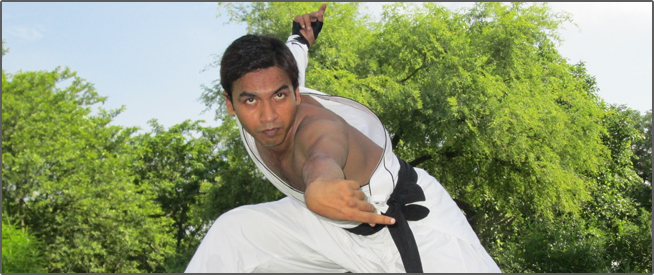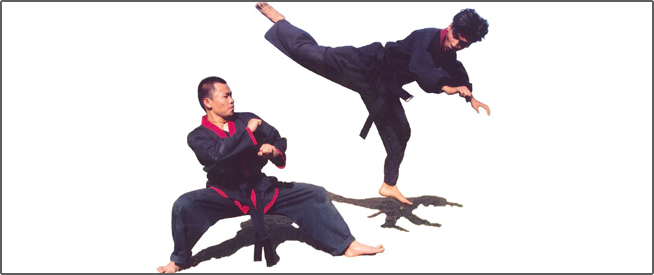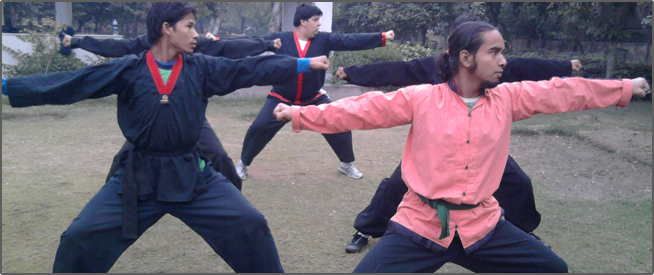Training in the following disciplines is offered at the Federation:
KUNG FU
Kung Fu is the most aerobic of the arts offered at the Indian Federation. There is no belt system but there is testing and students are awarded certificates. Students learn stretching, stances, kicks, jumps, movements, and empty hand and weapons forms. All new Kung Fu members begin in Level 1, regardless of skill or previous experience.
QIGONG (Chi Kung)

Qigong strengthens the body and unblocks the flow of Chi. Students begin with Yijinjing, a soft qigong form, very similar to yoga, that was one of the four original forms created by Bodhi dharma to help rejuvenate the monks after hours of seated meditation. Its stances are similar to yoga. Although not as active as Kung Fu or Tai Chi, it strengthens the body internally and externally.
TAIJI QUAN (Tai Chi)

Taiji Quan was originally and still can be a fighting art. Today it is more commonly practiced to keep one’s good health and stimulate the movement of chi or life force. It is strengthening and meditative. The movements are slow, fluid and mostly soft. Shaolin Tai Chi is most akin to the Chen style.
CHIN NA( Kung Fu Techniques)

Master Aaftab Siddiqui is a master practitioner in the technique of Chin Na, which controls or locks an opponent’s joints or muscles/tendons so that they cannot move, thus neutralising the opponent’s fighting ability.
Chin means to seize or trap, na means to lock or break, and while those actions are very often executed in that order (trap then lock), the two actions can also be performed distinctly in training and self defence. Which is to say – a trap isn’t always followed by a lock or break, and a lock or break is not necessarily set up by a trap. There is quite a bit of overlap between chin na theory and technique with the branches of traditional Chinese medicine known as tuina (推拏) as well as the use of offensive and defensive qigong as an adjunct of chin na training in some styles.
The recent understanding that grappling is as important as striking has also caused some Chinese martial arts instructors to focus on their chin na techniques, even expanding the system by incorporating or developing new ones. This is one reason why the chin na of one school may differ from that of another.
SHUAI JIAO (Blocking Techniques)
This is a form of Chinese wrestling combined with strike and blocking techniques. It was originally just a wrestling style, but certain strikes and block techniques were later incorporated to round it out. It is sometimes known as modern Chinese or Mongolian wrestling. There are numerous style variations taught such as the Beijing Style, Tianjin Style, Baoding Style, Shanxi Style, Mongol Style and the Xinjiang Style.

